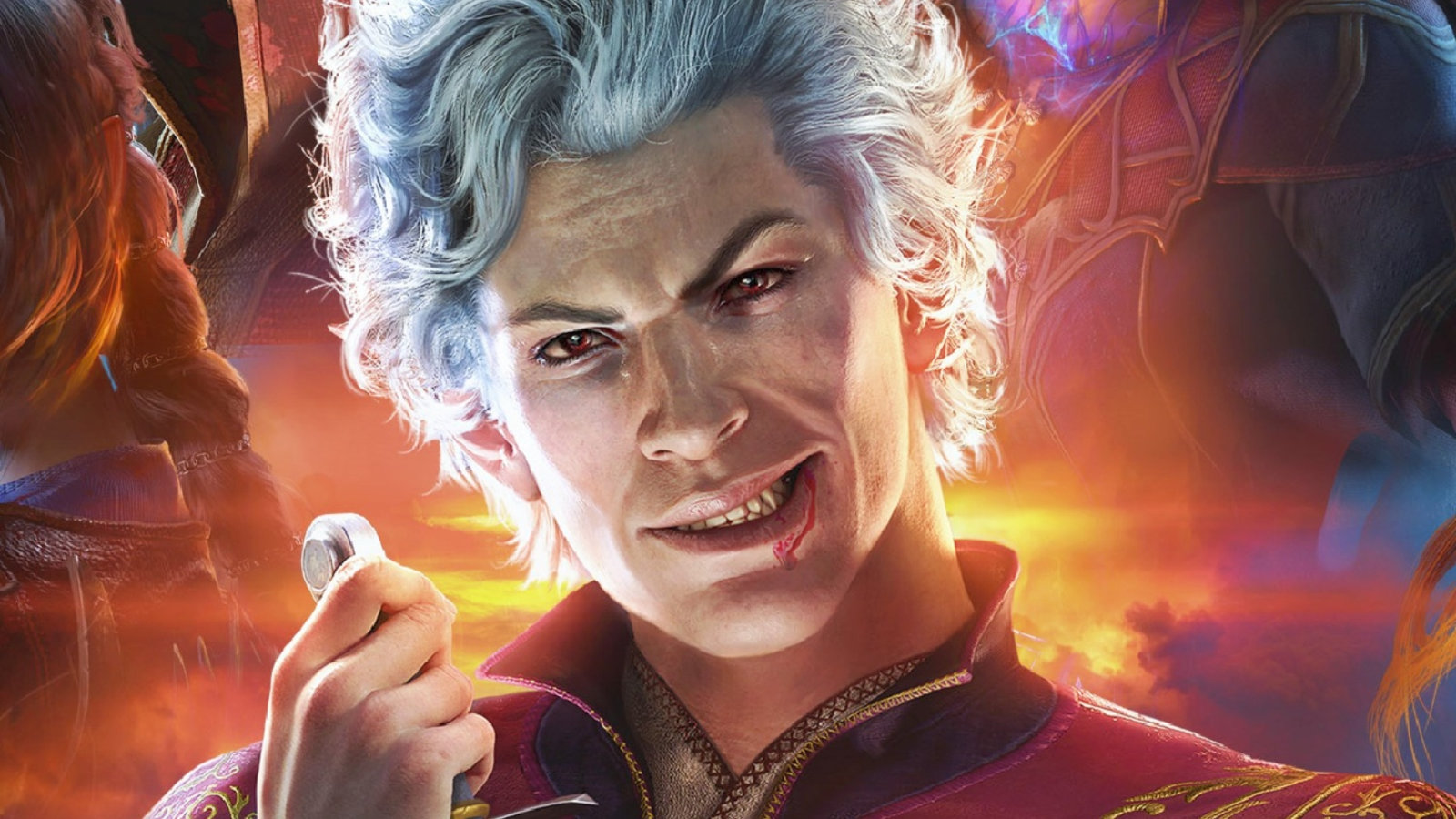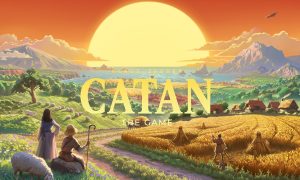It’s impossible to overstate the importance of Dungeons & Dragons to the gaming world. It has served as inspiration for countless RPGs, movies, video games, and has seen a major resurgence as of late thanks to the likes of Stranger Things and, oddly enough, COVID. It’s been just over 20 years since the last installment in the Baldur’s Gate series, and impossibly, that ends today. Brought to life by RPG masters Larian Studios after a lengthy 3 year stint in Early Access, we are happy to once again return to the Forgotten Realms. Welcome to our review of Baldur’s Gate 3.
If you’ve not played Baldur’s Gate or Baldur’s Gate II: Shadows of Amn, rest assured it isn’t necessary to enjoy this third installment. For a short refresher on the second title, a man named Jon Irenicus (and easily one of the best antagonists in CRPG history) drives the player to hell and back (rather literally) to foil his grand bid to gain immortality. The titular city serves as the backdrop for intrigue, political infighting, and even a fight with a literal god. Heroes like Jaheira, Imoen, Aerie, Minsc (and his pet hamster Boo), Cernd, Korgan, Mazzy, and more came together to save the world. While not a direct sequel, Baldur’s Gate 3 takes place roughly 100 years after the events of Shadows of Amn, directly following the events of the Descent into Avernus. Once again the city of Baldur’s Gate is under attack, this time by the mysterious and malevolent mind-controlling Illithid. Dubbed “mind flayers”, these monsters have kidnapped the residents of Baldur’s Gate. You are one of those residents, and unfortunately for you, your situation only gets worse from here…
With a mind-controlling tadpole burrowing into your brain, your primary mission is to get it out, but that’s going to prove to be more of a challenge than you might expect.
Our review will attempt to be somewhat spoiler free, though some functions and moments will require a bit more discussion to set the tone or conditions to talk about them effectively. As such, we’ll be mindful of spoilers wherever possible, and marking them clearly when they are not. With that said, let’s build a character.
You’ve got a wealth of options to choose from to create your own custom character. Frankly, you’ll be spoiled for choice with 12 major classes, and 46 subclasses. These can be attached to the 11 races, and 28 subraces. Asmodeus Tiefling? Check. Lightfoot Halfling? Yep. Black Dragonborn? Exciting! Better still, you’ll find this to be not only a cosmetic choice, but one that’ll have direct and immediate reactions from the literal thousands of characters you’ll encounter. To say that the character creator is robust is like saying Arizona is kinda warm in the summer. Take a look!
First and foremost, Baldur’s Gate 3 has one of the most impressive and inclusive character creation systems in any game, regardless of genre. Frankly, it puts Chinese and Korean MMOs to shame. Brace yourself for numbers – here we go! There are four body types from slim to absolutely yolked for most races, male, female, or non-binary/other for identity, nearly a dozen voice options for every race, eight facial presets, and sixty or so skin colors with the option to unlock all 145 skin colors if you want to go off-brand for your chosen race. There are ten scar options, a slider for maturity from young to old, freckle density, freckle intensity, vitiligo pigmentation, and more than a few genital options. 44 facial tattoos, 15 piercings, 32 eye colors (again with the option to unlock the full list of 145 of them, including heterochromia), and 17 eye makeup styles, 77 lip tints with sliders for intensity, metallic tint, and glossiness. 87 hairstyles, 125 hair colors, with highlights and graying options for accents, and 19 facial hairstyles round out that list.
Moving onto backgrounds, there are 11 of them – Acolyte, Charlatan, Criminal, Entertainer, Folk Hero, Guild Artisan, Noble, Outlander, Sage, Soldier, and Urchin. These give your character a bit of flavor for their upbringing, but also give skills in things like insight, religion, athletics, survival, acrobatics, performance, and more. These come up frequently in all sorts of ways you can’t predict, but this is a choice you’ll want to role play as there’s simply no way to game the system.
If you want to tinker with your initial stats, you are welcome to do so, but your character is somewhat pre-allocated to start. Based on your class, it’ll automatically try to assign the stats that will serve you best. You are welcome to change these as you wish, including your selected proficiencies. If you ever wanted a super smart Barbarian with a focus on Arcana and Stealth, well Baldur’s Gate 3 isn’t here to stop you.
For a more guided experience, you can also play as one of the Origin characters. These allow you to select one of your party members as the main character rather than creating one yourself. You’ll control them through the adventure, with their personal quests becoming part of the main quest. One of these origins is not like the others, however. The Dark Urge allows you to create a custom character and choose their class, but unlike “Tav” comes with a dark, unknown backstory. This isn’t for the faint of heart, as you’ll need to fight your inner demons to avoid committing atrocities… or encourage these urges, if that’s your thing.
One of the biggest changes in the move to a next-gen engine is that the team can push in on faces for conversations. And boy do they, frequently. As every character in the game (including animals, hello “Speak with Animals” spell) is voiced, the Larian team moves the camera in to take advantage of the fantastic visual fidelity present on the characters themselves. I’ll use a brief but hilarious interaction with a young Tiefling in camp as an example. Walking up with my wizard, the little guy offered to sell me a magical ring that gives me a boost to my luck. He demonstrates this with a coin toss that happens to land on whatever selection I’ve made. Suspicious to be sure. My rogue having this same conversation immediately noticed the grift. I could roll against my dexterity stat and manipulate the ring to make it disappear, signaling the little hustler that I was onto his game. All of this is done at a closeness we’ve never seen in a Baldur’s Gate game, evoking games like Dragon Age: Inquisition instead. It makes you care about these interactions more, and it makes them far more satisfying. The performance capture on each character is also very well done, and combined with the excellent visual fidelity, breathes life into even the most otherwise-insignificant characters in the game.
It’s staggering, the sheer magnitude of options available to you in Baldur’s Gate for nearly every interaction. Racial traits, class, previous interactions with associates, upbringing, where you once lived, stats, religious preference, knowledge of history, medical training, if you happened to have picked up a book, sheer dumb luck, and much more can be used to tilt the odds in your favor, and that doesn’t even count forcing the lever with the parasite hitchhiker in your head. Dice rolls rule the day so you’ll still need to nail the numbers to make it all come together, but it makes every single interaction emulate the tabletop game in the best way. You feel the dice rolls, you celebrate the critical hits, you flinch at the critical failures, and you wince at those “skin of your teeth” rolls where you make it, but only just, thanks to some combination of equipment, stat bonuses, and other advantages. It creates tension in a way we’ve never seen in a CRPG before, other than the ones Larian has made in the past.
The Sword Coast is absolutely gorgeous as well. Partnering up with NVIDIA, Baldur’s Gate 3 ships with full DLSS 2 and DLAA support. On a GeForce RTX 40 series card, there is an average uptick of upwards of 93% increase in framerate. A quick test on a GeForce RTX 4060 Ti gave me reliable 4K resolution with an average framerate hovering around 70fps – pretty quick for an entry level card. That said, Chapter 3 isn’t as well refined. Framerate can be highly inconsistent swinging from 60 to 30 on that same 4060 Ti. Cards with more VRAM fare better, but there’s still some swing. Popping down to a 2080 Super on a laptop I was getting 1080p at 60fps, and between 65 and 77% GPU utilization – this game is very well optimized. Framerate cap and lock, model quality, detail distance, instance distance, texture quality, texture filtering, animation level of detail, dynamic crowd density, shadow quality, cloud quality, fog quality, anti-aliasing, ambient occlusion, depth of field options and quality, God rays, bloom, and subsurface scattering are all possible tweaks to get precisely the framerate you want, so tweak as you see fit. If your preferences run to the AMD side it’s a lot lighter on options – AMD FSR 1.0 and FidelityFX Sharpening can help you with those cards. If you plan on playing on Steam Deck, you may find it looks and runs a bit worse than in Early Access. We’re not sure why this is, but it probably has something to do with drivers and such. Prior to launch, it either looked very blurry or very aliased with the sharpening options unavailable, and post-launch it’s… better but still not great. It also has a very consistent stutter that inconsistently shows up on each startup. If you don’t get hit by it, you won’t see any, but if you do get it it’ll be happening every few seconds.
I’m very happy to see that Baldur’s Gate 3 continues the Larian tradition of offering cross-platform play, cloud saves, LAN support, Direct Connection, as well as standard Steam options for multiplayer connectivity. With up to four players able to join in the fun, it’s surprising just how frictionless the multiplayer functionality really is. Better still, if one of your party isn’t available to “venture forth”, the folks remaining can take control of the party member and direct them until that human player is able to once again join the party. Local multiplayer is a bit weirder. It functions just fine when playing an entire campaign together, but joining someone in-media-res will have P2 create an entirely new character rather than just taking the role of someone in the party. P1 can still play the game as normal while P2 is creating their character, but it’s an incredibly weird decision.
If you are the kind of person who likes to share their experiences with an audience, you’ll be happy to know that there is a Twitch extension built directly into the game. Enabling it will allow your audience to vote on your interactions and choices. While they can’t directly impact those outcomes, they can certainly weigh in and share in the experience – a cool option for those who enjoy that sort of thing. Your audience won’t be able to affect combat (aside from chat roasting you over strategies), and those familiar with D&D will need a bit of time to get to grips with battles here.
There are some liberties taken with the D&D 5E rules, but thankfully they are battle-tested and tilted to ensuring the player is having fun. As such, bonus actions like shove, drinking a potion, or scroll usage that would otherwise be bound to a specific character class can be used by all characters. Similarly, metamagic options are tweaked and balanced to function within the game. There are plenty more that I could detail out, but thankfully I’ve not run into any that feel like a cheat rather than a simple tilt in the player’s favor.
When you eventually end up in combat, and there’s plenty of opportunities for that, you’ll need to understand the delicate balance of the Action system. Every character has a number of direct actions for things like attacking, casting spells, chugging potions, and similar things. They can also move a certain distance based on their attributes and traits, executing those actions anywhere inside that movement. In addition, there is a bonus action and reaction system. Bonus Actions can be things like unleashing a Ki-fueled empty-hand attack as a monk, or cantrips. Reactions are exactly what the name suggests — an optional reaction to an incoming stimulus. For example, a Warlock can react with a Hellish Rebuke spell when struck, unleashing 1D10 of fire damage on the attacker — an often fatal reaction. While Actions regenerate between rounds, Bonus Actions and Reactions do not — a short rest (an hour of in-game time) is needed to regenerate these, as well as Spells and other abilities. We’ll talk about short and long rests in a moment, so hold that thought.
One of the best parts of Baldur’s Gate 3 is the way combat unfolds. If you sneak up on a foe you’ll be able to perform sneak attacks. If you are above them you’ll receive a bonus to your ranged attacks. If you use your staff to knock a foe prone you’ll have an incredible advantage on an all but incapacitated foe. If you want to accomplish this same task with Tasha’s Hideous Laughter, then you too can enjoy the hilarious results as your enemy laughs themselves silly for 10 rounds. Using your character’s strength to lob an explosive barrel down from a rafter, influencing an enemy to attack their friends, catching an incoming arrow and flinging it back at the sender, charging up your companion’s infernal engine and turning her lose to burn her foes to ash, and there’s always the fun of lobbing a fireball into a narrow corridor only to watch enemies, crates, plates, forks, bedrolls, and more catch fire, flying everywhere, setting little fires wherever they land. It doesn’t matter what class, subclass, race, or background you pick, there’s a wealth of opportunities to engage with the combat of Baldur’s Gate 3, and each one leans into the best part of the game – somehow Larian has given us all the best parts of the pen and paper dice roller while removing all of the mundane.
One aspect I’ve enjoyed far more than I have any right to is shoving people. My (Ron) character is a Monk and I have insanely high athletics. I use those insanely high athletics to jump impossibly high, then I shove people off, laughing the entire time. I had a particularly troublesome boss that I just couldn’t take down despite my best efforts. He ended up down a nearby chasm. Sure, I lost his equipment, but we’ll always have the memory of his yelps as he careened down the craggy rock face. Every fight is a chance to engage the world in a fresh way, but it’s also a chance to hip-check folks off of impossibly high cliffs. Life is happiness, and shove makes me insanely happy.
It’s difficult to shove someone if you’re not close to them, and movement is paramount here. Each character gets a set amount of movement each turn based on their movement speed, and you can dash to double it – using your action in the process. Jumping is a handy way to move just a bit further as well, it only uses your bonus action for that turn. Melee characters will want to be as close as possible, but ranged characters want the opposite. To maximize your hit chance, you’ll want to surround enemies with your melee characters, optimally knocking them to the ground for advantage, and place casters and archers on high ledged so their rolls get advantage as well. Both positions come with their own perils, so it’s good to think about where and when you want to change positions. You don’t need to min-max here, but getting the most out of your spell slots, rage charges, and wild shapes is both fun and efficient. Putting Wyll up high to repeatedly cast eldritch blast and occasionally buff the party is a great strategy, but it won’t work in every situation. Abuse those quicksaves, experiment, and just have fun.
Eventually you are going to get tired. You’ve used all your spells, exhausted all of your ki, shoved all the things, and your characters just need a break – it’s time for a long rest. Long rests are not only a chance to recover all skills, health, abilities, and the like, but a chance to interact with and get to know the various members of your party. Learning how they tick, what fears they harbor, and their deeper stories can be key to unlocking additional traits, knowledge, and even romantic options. This longer rest requires camp supplies, so you’ll want to make sure you bring provisions with you at all times lest your otherwise-restful rack time be somewhat less so. Something to be aware of, however, is that time does continue forward, and that can mean problems. Not saving people from being imperiled can mean they end up dead, and yes that includes main characters. Hiking up to a building on fire and then immediately taking a nap is sure to have consequences for the poor souls inside.
Your party in BG3 is, put simply, delightful. You begin as a rag tag group of unlikely (and unwilling) allies, but by the end of the game it felt like any one of them would lay down their life for another. It’s a slow progression and feels natural as well as incredibly satisfying to earn each individual’s trust. Likewise, romance takes a different path than most games. You may have the hots for someone, but pursuing them romantically doesn’t simply end with a sex scene. In fact, several companions have this scene right up front. Instead your relationship grows and changes over the course of the game – hopefully for the better. While I (Flynn) didn’t experience this particular part of the game, I chose to have my character spread the love around, so to speak, to control her Dark Urge. She became romantically involved with Shadowheart, Lae’zel, Wyll, Halsin, a demon, and even a mind flayer. Unfortunately, most characters in the game want to keep their relationships monogamous, the only polyamorous character being Halsin, so you can only romance very specific combinations of characters. I’m a bit disappointed I couldn’t turn the entire party into one big polycule, but it’s not a very involved system either.
Speaking of the Dark Urge: quests! Baldur’s Gate has a massive amount of them, and quite possibly even more player freedom with which to complete them. The Druid’s Grove from Act 1 and Early Access is a great example: you can save the grove by allowing a ritual to complete, closing it off from the outside world, or defeating the goblins threatening the grove, or cutting the head off the snake and only killing the goblin leaders, or say screw it and assault the grove with the goblins. Almost any solution you can think of to a problem is completely valid and more often than not acknowledged by the game in dialogue. Need to stage a prison break? You can pickpocket the guards for the keys, pick the lock yourself, take out the guards one by one lethally or non-lethally, or even destroy the back walls for a tunnel out in some cases. Want to painstakingly drag explosive barrels into the rafters and then tip them onto the heads of the unwitting enemies below? Have a blast. This truly feels like a tabletop Dungeons and Dragons game, you only have to tell the DM what you’re doing and you can do it.
The stories these quests come with are also impeccably well written. Characters are complex and human, and stories have unexpected twists and turns that still feel appropriate. The main quest is certainly a highlight, but side quests can feel equally important, often connecting to a party member’s personal quest in interesting ways. Of course, the game doesn’t take itself seriously all the time, D&D is less Game of Thrones and more Monty Python after all, and there are some very funny moments strewn throughout. For example, in a random clothing shop you can find an NPC fantasizing about what class he’ll choose to adventure as, and he’s comically terrible at everything he tries. Things only escalate as you progress too, with pivotal character moments paced nicely throughout.
As amazing as the game is, it’s also quite glitchy as a whole, and moreso the further you get into the game. Animation oddities, quests not progressing properly, softlocks where conversations or combat won’t end properly, and even one where save syncing gets stuck so you can’t save or load are just some of the hiccups. It’s frustrating to see, and I’m sure some of this is caused by bumping the release date up to avoid a certain other big RPG, so hopefully the developers aren’t crunching to get things fixed. The game is still playable and it’s better than the state most AAA games release in. Given Larian’s track record, many of these bugs should be squashed within a few months, so we can give them the benefit of the doubt here.
Baldur’s Gate 3 is absolutely magnificent. There is simply nothing like it anywhere. Not even the likes of Fallout, Skyrim, or any other massive RPG can compete with what’s on offer here. Even super powered choices-matter-titles like The Witcher III: Wild Hunt don’t offer the interactivity and flexibility of this title. While there may be a few last minute things to tighten up post-launch, none of that stops me from declaring that Baldur’s Gate 3 is a once in a decade experience. They simply don’t make ‘em like this, and I can’t wait to experience all this game has to offer, and that’s likely going to take half a dozen playthroughs and possibly far more.
Ron Burke is the Editor in Chief for Gaming Trend. Currently living in Fort Worth, Texas, Ron is an old-school gamer who enjoys CRPGs, action/adventure, platformers, music games, and has recently gotten into tabletop gaming.
Ron is also a fourth degree black belt, with a Master's rank in Matsumura Seito Shōrin-ryū, Moo Duk Kwan Tang Soo Do, Universal Tang Soo Do Alliance, and International Tang Soo Do Federation. He also holds ranks in several other styles in his search to be a well-rounded fighter.
Ron has been married to Gaming Trend Editor, Laura Burke, for 28 years. They have three dogs - Pazuzu (Irish Terrier), Atë, and Calliope (both Australian Kelpie/Pit Bull mixes), and an Axolotl named Dagon!
David is the kind of person to wear his heart on his sleeve. He can find positives in anything, like this is a person who loved Star Fox Zero to death. You’ll see him playing all kinds of games: AAAs, Indies, game jam games, games of all genres, and writing about them! Here. On this website. When not writing or playing games, you can find David making music, games, or enjoying a good book.
David’s favorite games include NieR: Automata, Mother 3, and Gravity Rush.

Baldur’s Gate 3 is an impossibly good RPG made with a great deal of passion and skill. While there are some last minute issues to iron out, Larian Studios has delivered an adventure beyond our wildest imaginations.
PROS
- Inexhaustible approaches to every interaction
- Dialogue is extraordinarily written throughout
- Meaningful and impactful relationships
- Translates the best parts of D&D while hiding the mundane
- Gorgeous game from top to bottom
- Incredible voice work from a stellar cast
- And so much more…
CONS
- Game is progressively less polished the further you go
- Some technical glitches
See below for our list of partners and affiliates:

























